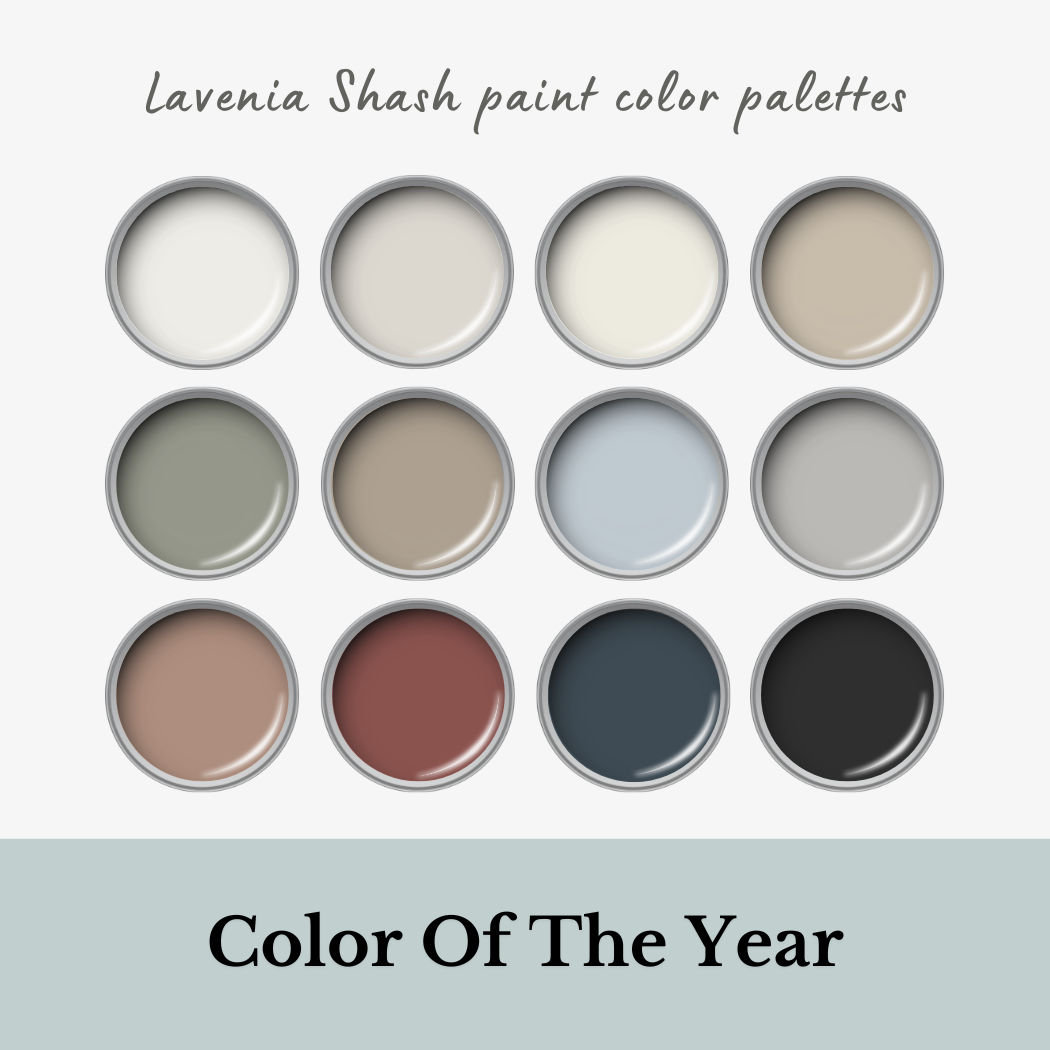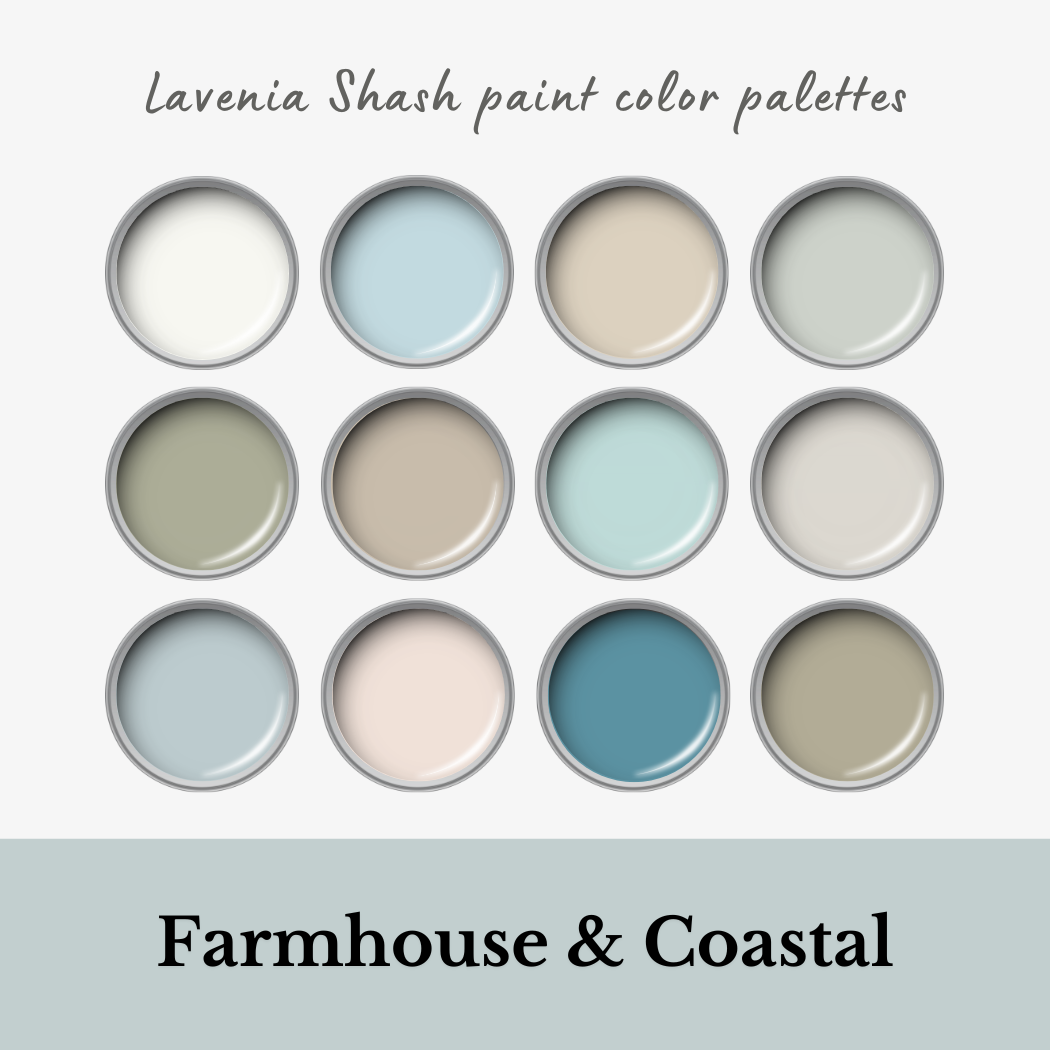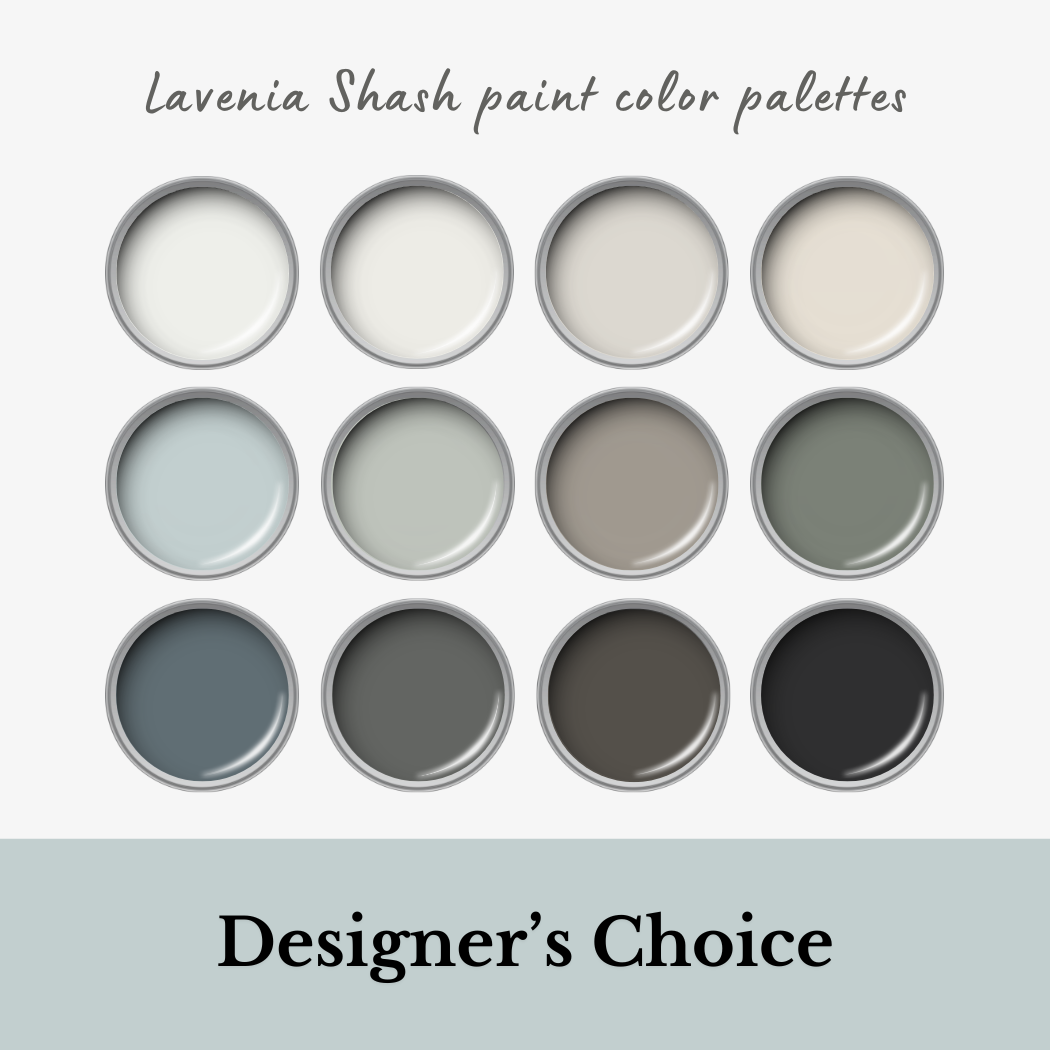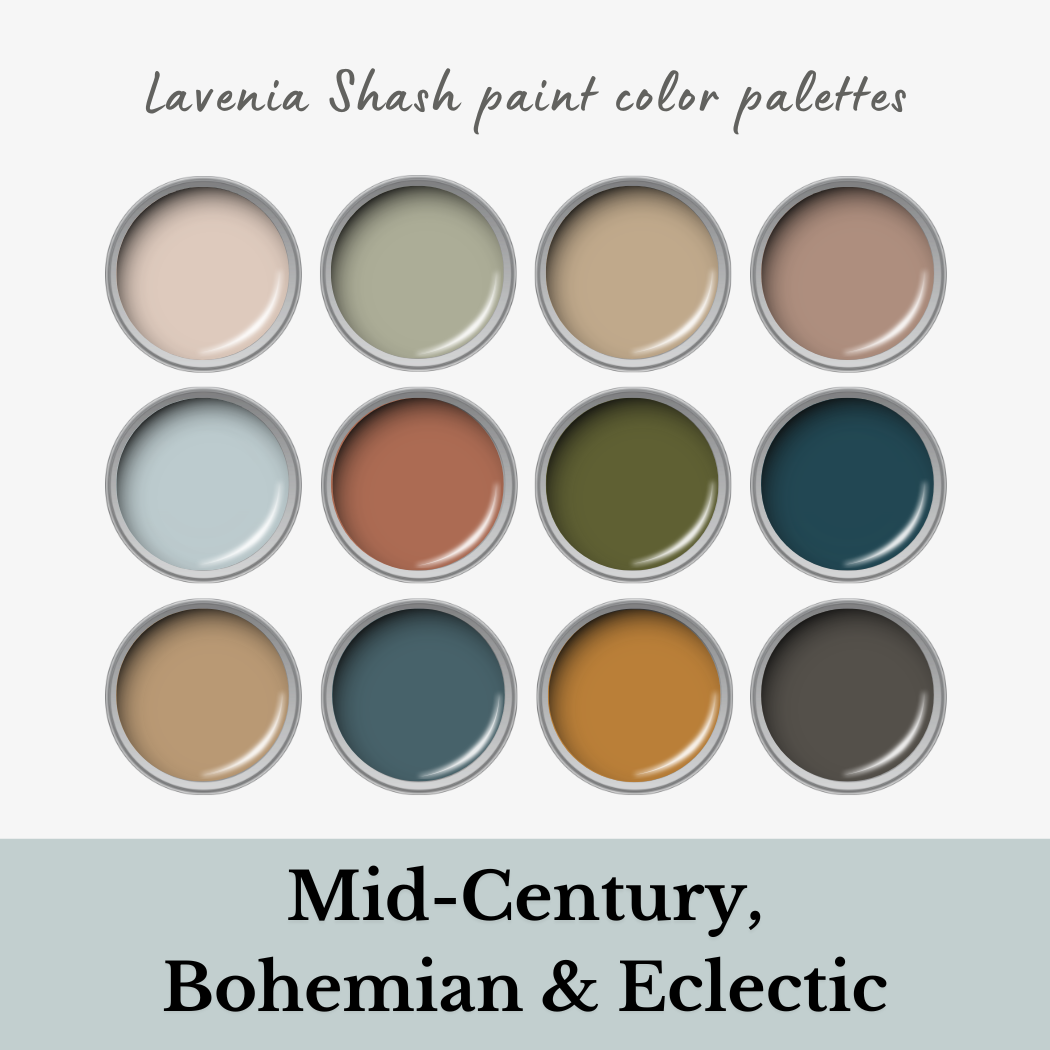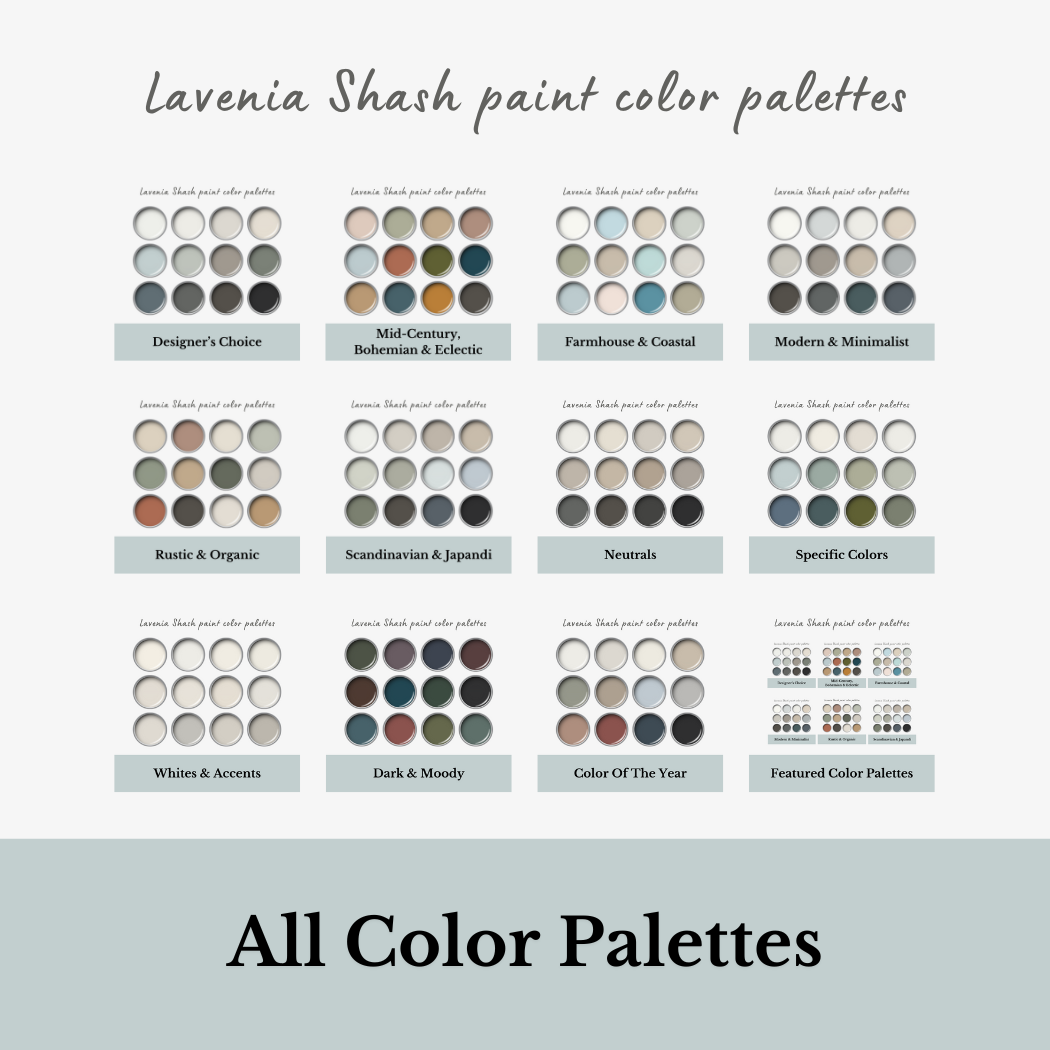

How lighting affects a paint color - a guide to understanding the role of artificial lighting in a space.
Lighting is a powerful tool that can dramatically transform the way paint colors are perceived within a space. It has the ability to enhance or diminish the vibrancy, depth, and overall atmosphere of a room. Whether natural or artificial, the quality and placement of light sources can have a significant impact on the visual impact and mood created by different paint colors.
In this guide, we delve into the fascinating relationship between artificial lighting and paint colors, exploring how various lighting conditions can influence the appearance and character of your chosen hues. By understanding the interplay between light and color, you can make informed decisions when selecting paint colors for your home or any other interior space.
Questions covered on this topic -
- Color temperature and color rendering.
- How to select the right artificial light for your house?
- What are the common types of lighting available and where to place them?
- What is the best artificial lighting for a room based on its cardinal direction?
- How to select lighting for a space based on wall color?
- What paint colors work best for North, South, East and West rooms?

The Influence of Color Temperature
One of the key factors in understanding how lighting affects paint colors is color temperature. Color temperature refers to the perceived warmth or coolness of light, and it is measured in Kelvin (K). We explore how different color temperatures can enhance or alter the appearance of paint colors, allowing you to create the desired ambiance in your space.
Warm Color Temperature (2700K-3000K)
- Warm color temperatures produce a yellowish or golden light similar to that of candlelight or incandescent bulbs.
- These warm tones create a cozy and inviting atmosphere, often associated with comfort and relaxation.
- Spaces with warm color temperature lighting tend to feel intimate and soothing.
- Suitable for spaces where a relaxed and cozy ambiance is desired, such as bedrooms, living rooms, or dining areas.
Neutral Color Temperature (3500K-4000K)
- Neutral color temperatures are neither warm nor cool, appearing as a white light with a slight tinge of yellow or blue.
- This range of color temperature is often considered more natural and balanced, resembling natural daylight or cool white light.
- Neutral color temperatures are commonly used in offices, kitchens, bathrooms, and other work or task-oriented areas.
- These temperatures provide good visibility and clarity, making them suitable for spaces that require focused attention and accurate color rendering.
Cool Color Temperature (5000K-6500K)
- Cool color temperatures produce a bluish or whitish light that resembles daylight or overcast sky lighting.
- These cool tones create a sense of alertness, brightness, and energy.
- Spaces with cool color temperature lighting appear more vibrant and lively.
- Suitable for spaces where tasks requiring concentration, such as workspaces, garages, or retail environments, are performed.
- Cool color temperatures are also used in outdoor lighting to provide security and enhance visibility.
The Role of Color Rendering
While color temperature influences the color appearance of light, color rendering index (CRI) measures how accurately a light source reproduces the colors of objects. CRI is measured on a scale from 0 to 100, with 100 being the highest value. A higher CRI indicates better color accuracy, meaning the light source accurately renders the colors of objects as they would appear under natural lighting conditions. High CRI light sources reveal more vibrant and true-to-life colors, enhancing the visual perception and overall ambiance of a space.
In settings where color accuracy is crucial, such as art galleries, retail stores, or design studios, light sources with a high CRI (typically above 80) are recommended to ensure accurate color representation.
Intensity and Direction
The intensity and direction of lighting can create shadows and highlights on the wall, affecting how the color appears. Bright, direct lighting can reveal more color details and make the wall color appear more vibrant, while softer, diffused lighting can make colors appear more muted or subdued.
Wall Texture
Lighting can also highlight the texture of a wall, which in turn affects how the color is perceived. Textured walls with shadows and uneven surfaces may interact differently with lighting, creating variations in color perception.
It's important to acknowledge that color temperature can be subject to personal perception and variations in the quality of light sources. Additionally, the same color temperature can appear different when applied to different surfaces or in combination with natural light.
To determine the most suitable color temperature, it is beneficial to experiment with different options and observe their effects in the intended space. By doing so, you can better understand how the lighting interacts with the surroundings and how it influences the appearance of colors.
When choosing a wall color for a room, it's crucial to consider these factors. The same color can exhibit significant variations under different lighting conditions. To ensure a satisfactory result, it is advisable to test paint samples in the actual room and observe how they appear under various lighting scenarios. This allows for a more accurate assessment of how the color will interact with the lighting in that specific space.
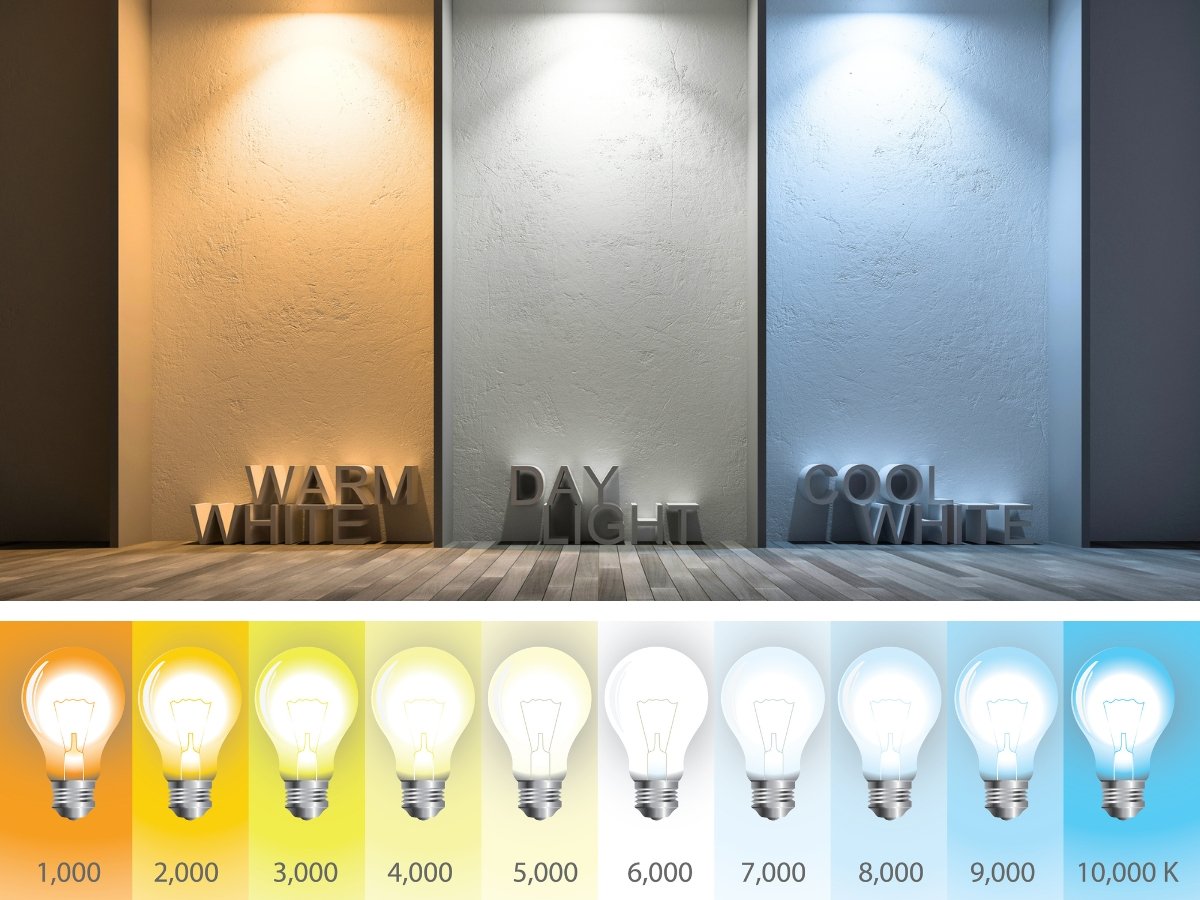
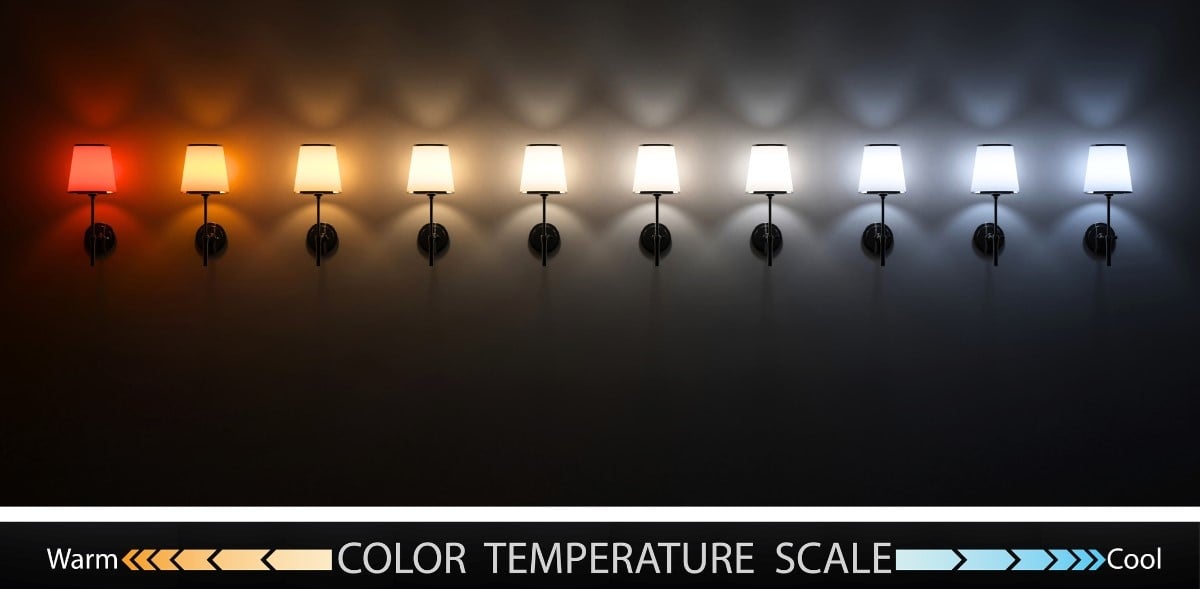
How to select the right artificial light for your house?
Selecting the right artificial lighting for your house involves considering several factors such as the purpose of the room, the desired ambiance, energy efficiency, and personal preferences. Here are some steps to help you choose the appropriate artificial lighting:
Determine the Purpose
Identify the function of each room or area in your house. Different rooms have different lighting needs. For example, a kitchen may require bright task lighting for food preparation, while a living room might benefit from a combination of ambient and accent lighting for a cozy and inviting atmosphere.
Understand Lighting Types
Familiarize yourself with different types of artificial lighting available:
- Ambient Lighting: It provides overall illumination and sets the general mood of a room. It can be achieved through ceiling-mounted fixtures, chandeliers, or recessed lights.
- Task Lighting: This lighting is focused on specific areas where tasks are performed, such as reading lamps, under-cabinet lights in the kitchen, or desk lamps.
- Accent Lighting: Accent lighting highlights particular features or objects, like wall sconces to showcase artwork or track lighting to illuminate architectural elements.
Consider Bulb Types
There are various bulb types, each with its own characteristics:
- Incandescent: Warm light, but less energy-efficient.
- Halogen: Similar to incandescent but more efficient and longer-lasting.
- Fluorescent: Energy-efficient, but can have a cool or bluish hue. Compact fluorescent lights (CFLs) are common.
- LED: Highly energy-efficient, long-lasting, and available in various color temperatures. They have become popular due to their versatility.
Determine Color Temperature
Color temperature is measured in Kelvin (K) and affects the warmth or coolness of light. Choose a color temperature that complements the room's purpose and desired ambiance.
Consider Dimmers and Controls
Dimmer switches offer flexibility in adjusting light intensity based on activities and mood. Consider incorporating dimmers or smart lighting controls for added convenience and versatility.
Balance Uniformity and Variety
Strive for a balance between uniform lighting throughout the house and incorporating different lighting techniques to create visual interest and highlight specific areas or objects.
Energy Efficiency
Opt for energy-efficient lighting options, such as LED bulbs, which consume less electricity and have longer lifespans. Look for lighting fixtures with ENERGY STAR ratings for further energy savings.
Personal Preference
Ultimately, your personal preference and style should guide your lighting choices. Consider your aesthetic preferences, the overall design theme of your house, and how the lighting complements your decor.
It's a good idea to experiment with different lighting options, consult with lighting professionals, or visit lighting showrooms to see how different fixtures and bulbs look in person. This can help you make informed decisions and create the desired ambiance and functionality in your home.

What are the common types of lighting available and where to place them?
Artificial lighting comes in various types, each serving different purposes in a room. When choosing the right light for a room and determining their placement, consider the following:
Ambient Lighting
- Ambient lighting provides overall illumination and sets the general mood of a room.
- Common sources include ceiling-mounted fixtures like chandeliers, recessed lights, or track lighting.
- Choose fixtures that distribute light evenly across the room.
- Place ambient lights in the center of the room or at regular intervals to ensure uniform illumination.
Task Lighting
- Task lighting is focused lighting for specific activities such as reading, cooking, or working.
- Examples include desk lamps, under-cabinet lighting in the kitchen, or adjustable floor lamps.
- Consider the function of the space and the tasks performed when selecting task lighting.
- Place task lights where they provide direct illumination without causing glare or shadows on the work surface.
Accent Lighting
- Accent lighting highlights specific features, objects, or architectural elements in a room.
- It adds visual interest and creates focal points.
- Wall sconces, track lighting, or picture lights are commonly used for accent lighting.
- Position accent lights to emphasize artwork, decorative items, or architectural details.
Decorative Lighting
- Decorative lighting serves both functional and aesthetic purposes.
- It can be a statement piece or an element of visual interest.
- Chandeliers, pendant lights, or decorative table lamps fall into this category.
- Consider the style and scale of the room when selecting decorative lighting.
- Place them in areas where they can be a focal point or enhance the overall design scheme.
When determining the placement of lights in a room, keep the following tips in mind:
- Aim for a balance of lighting throughout the room, avoiding areas that are too bright or too dim.
- Consider the room's layout, furniture arrangement, and focal points to guide the placement of lights.
- Use a combination of different lighting types to create layers of light and a versatile lighting scheme.
- Install dimmer switches to have control over light intensity and create different moods.
- Take advantage of natural light sources and incorporate artificial lighting to supplement or complement them.
- Experiment with different lighting arrangements and test the effects before finalizing the placement.
Ultimately, the right light and its placement depend on the specific room's purpose, the desired ambiance, and personal preferences. Consider these factors in combination with the room's size, layout, and existing decor to create a well-lit and visually appealing space.

What is the best artificial lighting for a room based on its cardinal direction?
The choice of artificial lighting for a room based on its cardinal direction can help optimize the lighting conditions and enhance the overall atmosphere. Here are some general considerations for different cardinal directions:
North-Facing Rooms
- North-facing rooms tend to receive cooler, indirect light throughout the day.
- To counterbalance the cool light, consider using warmer color temperatures (around 2700K-3000K) to create a cozier atmosphere.
- Incorporate a combination of ambient, task, and accent lighting to ensure proper illumination and avoid shadows.
South-Facing Rooms
- South-facing rooms receive ample natural light throughout the day, which can be warm and bright.
- Consider using cooler color temperatures (around 3000K-4000K) to balance the natural light and prevent the room from feeling overly warm.
- Utilize window coverings or light-filtering options to control excessive brightness if needed.
- Incorporate a combination of ambient and task lighting to supplement natural light and provide adequate illumination during darker periods.
East-Facing Rooms
- East-facing rooms receive direct sunlight in the morning, which provides warm, golden light.
- Take advantage of the morning sunlight by using a combination of ambient and task lighting to enhance the brightness and warmth of the room.
- Utilize window coverings, such as sheer curtains or blinds, to diffuse harsh sunlight during the early hours.
- Consider using cooler color temperatures (around 3000K-4000K) to balance the warm morning light and ensure a comfortable atmosphere throughout the day.
West-Facing Rooms
- West-facing rooms receive direct sunlight in the afternoon, which can create a warm and potentially intense lighting condition.
- Use window coverings, such as blinds or curtains, to control and diffuse the afternoon sunlight, preventing excessive heat and glare.
- Consider using warmer color temperatures (around 2700K-3000K) to complement the warm afternoon light and create a cozy ambiance.
- Incorporate a combination of ambient and task lighting to ensure adequate illumination during darker periods of the day.
It's important to note that these recommendations are general guidelines, and the specific lighting needs may vary depending on factors like geographical location, window size, obstructions, and personal preferences. Assess the natural light conditions in the room throughout the day and experiment with different artificial lighting options to find the optimal combination that suits your specific space and desired atmosphere.

How to select lighting for a space based on wall color?
Selecting appropriate lighting for a space based on wall paint color involves considering factors such as the color temperature of the lighting, the undertones in the paint color, and the desired mood or atmosphere you want to create. Here are some tips to help you choose the best lighting for your wall paint color:
Consider Color Temperature
Color temperature refers to the warmth or coolness of the light emitted by a bulb and is measured in Kelvin (K). Warmer color temperatures (around 2700K to 3000K) create a cozy and inviting atmosphere, while cooler color temperatures (around 3500K to 5000K) produce a brighter and more energetic ambiance.
Consider the following:
- Warm Paint Colors: If your wall paint color has warm undertones, such as reds, oranges, or yellows, complement them with lighting that has a warm color temperature to enhance the cozy and inviting feel of the space.
- Cool Paint Colors: If your wall paint color has cool undertones, such as blues, greens, or grays, pair them with lighting that has a cooler color temperature to maintain a crisp and fresh atmosphere.
Evaluate Undertones
Pay attention to the undertones in your wall paint color. These subtle hues can affect how the color appears under different lighting conditions.
For example:
- Neutral Undertones: If your paint color has neutral undertones, such as beige, taupe, or gray, you have more flexibility in selecting lighting. Neutral colors tend to work well with a wide range of lighting options.
- Warm Undertones: If your paint color has warm undertones, consider lighting that complements those warm hues. For example, lighting with warm golden tones can enhance the warmth of the wall color.
- Cool Undertones: If your paint color has cool undertones, lighting with cooler tones can enhance the coolness of the color. Avoid lighting with warm tones that may clash with the coolness of the wall color.
Test Lighting Options
Before making a final decision, test different lighting options in the space. Install temporary lighting fixtures or use portable lamps with different bulbs to see how they interact with the wall color. Observe how the lighting affects the color's appearance during different times of the day and under various lighting conditions.
Create Contrast or Harmonize
Consider whether you want to create contrast or harmonize between the lighting and wall color:
- Contrast: If you want to create a dramatic effect or make the wall color stand out, opt for lighting that contrasts with the paint color. For example, if you have a dark wall color, consider using brighter, focused lighting to create contrast and highlight the color.
- Harmonize: If you want a more unified and seamless look, choose lighting that harmonizes with the wall color. Select lighting fixtures that blend well with the overall color scheme of the room, creating a cohesive and balanced design.
Remember, personal preferences and the specific mood or atmosphere you want to create also play a significant role in selecting appropriate lighting. Consider the overall style and function of the space, and trust your instincts when it comes to finding the perfect lighting that complements your wall paint color and enhances the overall aesthetic of the room.

Which paint colors work best for North, South, East and West rooms?
Choosing paint colors for specific cardinal directions can help enhance the lighting conditions and create a desired atmosphere in a room. While personal preference and the overall design scheme play a significant role, here are some general recommendations for wall colors based on cardinal directions:
North-Facing Rooms
- North-facing rooms receive cooler, indirect light, so it's beneficial to choose warmer colors to create a cozy and inviting atmosphere.
- Colors with warm undertones, such as creamy whites, soft grays, or warm beige, can work well.
- Opt for colors with mid to high Light Reflectance Value (LRV) to maximize the reflection of available light and prevent the room from feeling too dim.
South-Facing Rooms
- South-facing rooms receive ample natural light throughout the day, providing a bright and warm ambiance.
- Cool colors with blue or green undertones can balance the warmth of the sunlight.
- Consider colors like light blues, soft greens, or pale grays with cool undertones.
- Aim for a moderate LRV to maintain a comfortable brightness without overwhelming the space.
East-Facing Rooms
- East-facing rooms receive morning sunlight, which provides warm, golden light.
- Colors with warm undertones, such as soft yellows, peachy pinks, or light warm grays, can enhance the morning light and create a welcoming atmosphere.
- Opt for colors with moderate to high LRV to maximize the brightness and amplify the natural light.
West-Facing Rooms
- West-facing rooms receive afternoon sunlight, which can create a warm and potentially intense lighting condition.
- Colors with cool undertones, like light blues, soft grays, or pale lavender, can help balance the warmth of the afternoon light.
- Consider colors with moderate LRV to maintain a comfortable brightness without overwhelming the space.
Remember that lighting conditions, personal preferences, and other factors can influence how colors appear in a room. It's crucial to test paint samples in the specific room and observe how they interact with the lighting throughout the day to ensure the desired effect is achieved. Additionally, consider the overall design scheme and how the chosen colors harmonize with furniture, decor, and flooring to create a cohesive look.

Final thoughts
By selecting the appropriate artificial lighting, you have the ability to influence the hues and tones on your walls, regardless of the natural light exposure.
Cool shades like blues, greens, and grays tend to look their best when paired with cool, bright lights. Daylight bulbs, for instance, can help maintain a consistent appearance for these colors throughout the day and night. On the other hand, standard soft white light bulbs offer a warmer and more natural effect. These different types of lighting can subtly alter the perception of colors.
Bright colors such as red, orange, and yellow may appear more intense when illuminated by soft white light bulbs, while cooler paint colors like green, blue, and gray may appear slightly darker or less vibrant. By considering the desired effect and the characteristics of the paint colors in your space, you can choose the appropriate artificial lighting that enhances the overall aesthetic and achieves the desired visual impact.
So, harness the power of lighting, make thoughtful decisions about color temperature and lighting fixtures, and witness the magical transformation of your paint colors into a harmonious and visually stunning masterpiece.
Meanwhile...
If you are looking for paint colors for your home or space, check this out..
Choosing paint colors for your home can indeed be a challenging task. However, I'm here to simplify the process for you. Introducing my carefully curated paint palettes, designed to offer complementary, and coordinating colors suitable for various areas within your home.
The thoughtfully chosen set of colors in every paint palette ensure a harmonious and unified look throughout your home, allowing for seamless transitions between different areas while maintaining a cohesive overall aesthetic. Whether you're looking to refresh a single room or create a consistent theme across your entire living space, my paint palettes offer versatile and stylish solutions.
I have dedicated significant time and effort to curate each comprehensive, digital download PDF guide that showcases a collection of meticulously selected colors. Every color has been hand-picked with careful consideration of their undertones and compatibility, ensuring they work harmoniously together to create a cohesive and visually pleasing palette.
By providing you with professional advice and tips through informative PDFs, I aim to streamline your decision-making process and provide you with valuable resources that simplifies your journey towards a beautifully coordinated home.
With my expertise, I have assisted countless clients in uncovering paint colors that truly resonate with them. I am eager to extend my assistance to you as well, ensuring that you discover the perfect palette that brings joy and satisfaction to your space.
Should you have any questions about the colors prior to purchase, please get in touch with me by filling in the contact form.
I am reachable for advice post-purchase too!
Much success,
Lavenia Shash
All written content is the copyright of Lavenia Shash. Lavenia is a qualified interior and graphic designer. With a profound expertise, she excels in the art of creating cohesive and harmonious color schemes that perfectly suit both homes and individual styles.


